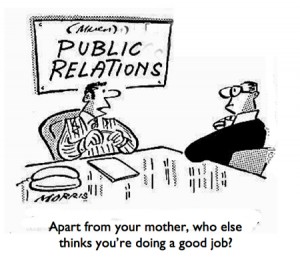
We hear a lot about being transparent in business. Like an open floor plan in a modern house or office, the ability to break down walls so that all involved are on the same page can create a more appealing business structure.
Here’s how Sharlyn Lauby describes it in a story for Mashable: “Transparency is about being open, honest, and accountable. It’s about responsibility. People are listening to you and making evaluations and decisions based upon what you say, and as such, it’s important to take responsibility for the messaging you put out there.”
Transparency often comes up when businesses are in some sort of trouble or scandal. But it can be much more universal than that. In a story for Entrepreneur, Robert Craven, CEO of Megafood, writes: “Far too often, companies see it only as a tool to be used when owning up to a mistake or righting a wrong. This approach is shortsighted and isn’t an effective way to build trust. Customers will be far more forgiving of mistakes if a company has a history of being forthright with all interactions — not just the negative ones.”
Here’s a look at some elements of transparency for CEOs and business leaders.
Make expectations clear
Poor communication can be a direct cause of confusion. And confusion in business can mean chaos. CEOs looking for transparency should strive to ensure that communication — and understanding the vision and direction of the business — is a strength. Andre Lavoie explores this for Entrepreneur, noting that, “Nothing is harder on employees than when they don’t have clear direction from management or aren’t given enough information or tools to understand what’s expected of them.”
“Transparency is the opposite of closed doors, where murmurs of leadership meetings shrouded in secrecy bounce down the halls,” Lavoie writes. “Instead, transparency is founded on the leadership being open and clear with the entire team. That could mean involving all levels of the staff on making major strategic decisions or cluing them in on how all of their roles are evolving.”
Know where you stand
A CEO may face an avalanche of daily and weekly meetings, all of which come with decisions to be made. Part of transparency is getting a full understanding of each issue prior to those decisions. Maynard Webb examines this for Forbes, writing, “Give yourself some time before sharing so that you’re not judging based on mercurial emotions, but on logical facts.” He features Slava Akhmechet, founder of RethinkDB, in the story.
“I don’t trust my moment-to-moment emotions to reflect the reality of the situation,” Akhmechet said. “On the other hand, if I do a week of meetings and get a consistent negative (or positive) vibe, I’ll be completely honest with the team about how I feel. This helps me avoid dragging the team into despair or euphoria, but also communicates the situation.”
Live it
Adopting a transparent approach at the office can get a big boost if the CEO feels that way about his or her own life. Some of us are more private than others, so it could be an adjustment. Social media offers the opportunity to show transparency, as long as the business leader handles it in a responsible manner. As Craven explains for Entrepreneur, it’s important to be “personally transparent.”
“Pick a medium or two (LinkedIn if your customers tend to be other businesses; Twitter or Facebook if consumers) and share your personal thoughts, ideas, likes, dislikes — the concept of transparency must start at the top,” he writes. “And don’t farm out your social media either — do it yourself!”
Be frank
A transparent approach can mean being a straight shooter, someone who won’t dance around an issue but will share opinions and decisions in a direct manner. That doesn’t mean being brutal in delivering such a message, but it also means not sugarcoating it, as Erin Osterhaus writes for Switch and Shift. She features recommendations by Halley Bock, CEO of Fierce, Inc.
“Some employers may think that cushioning a difficult conversation with compliments or small talk will alleviate tension, when in fact, it can complicate a delicate situation,” Osterhaus explains. “For instance, rather than telling an employee, ‘We’re concerned about your attendance rate. Please try to see what you can do to remedy it,’ Bock recommends being more direct, saying something like, ‘Our records show that you’ve been absent five times in the last two months. This exceeds the allotted three personal days we allow our employees, and any additional days you take off will be docked from your salary. If you are absent in excess of eight days, we’ll have to let you go. Please inform us if there is a personal or medical issue and we can try to determine the best way to address the situation.’”
Understand its appeal
A business that earns a reputation for transparency may become an increasingly attractive company to work for, and bring in talented job candidates looking for that up-front approach. Neil Patel writes about this in a story for Fast Company.
“Transparency is appealing in a raw, human sort of way,” he explains. “We know this intuitively from our interactions with other people. As you get to know someone, you develop an increasing sense of transparency with them, and they towards you. You can’t really be friends with someone unless there’s some level of transparency. This happens on a larger scale, too — with companies and online marketing.”
Get everyone on board
It’s important that employees buy in to the concept of transparency. Not only is it good for the business, it’s also good for the staff members to be able to express themselves about essential matters at appropriate times. Aaron Bell, founder and CEO of AdRoll, writes about this for Fortune, urging to “embrace and evangelize transparency.”
“Holding weekly all-hands meetings is one of the best ways to stay transparent, and it’s helped us tremendously,” he explains. “We treat these meetings as more than forums for celebration — though that’s important, too. We talk about frustrations and uncertainties just as often as success. The day before your meetings, encourage your employees to post anonymous questions to a message board, and have others up-vote the most compelling questions. We do this at AdRoll, and I’ll address the most popular questions/issues in front of the entire company. It’s a company-wide detox that clears up concerns and helps team members call out issues that haven’t been discussed yet.”
Emphasize trust
Few things can damage a business as much as a lack of trust. Whether it’s with employees or clients, mistrust can send a business down a destructive path, one that will be hard to reverse. This is where transparency can make an enormous impact, as Patel describes in his Fast Company piece.
“Who can trust a company or person who doesn’t disclose information, who keeps everything close to the vest, who doesn’t share anything?” Patel writes. “There are very few ways to build trust, but one of them is to be transparent. The opposite of transparency is secrecy, which only serves to erode trust. Entire organizations exist for the sole purpose of encouraging transparency. Why? Because a culture that is more transparent can build trust. Trust defeats corruption. Transparency wins, because transparency engenders trust.”
Business & Finance Articles on Business 2 Community(97)
Report Post







